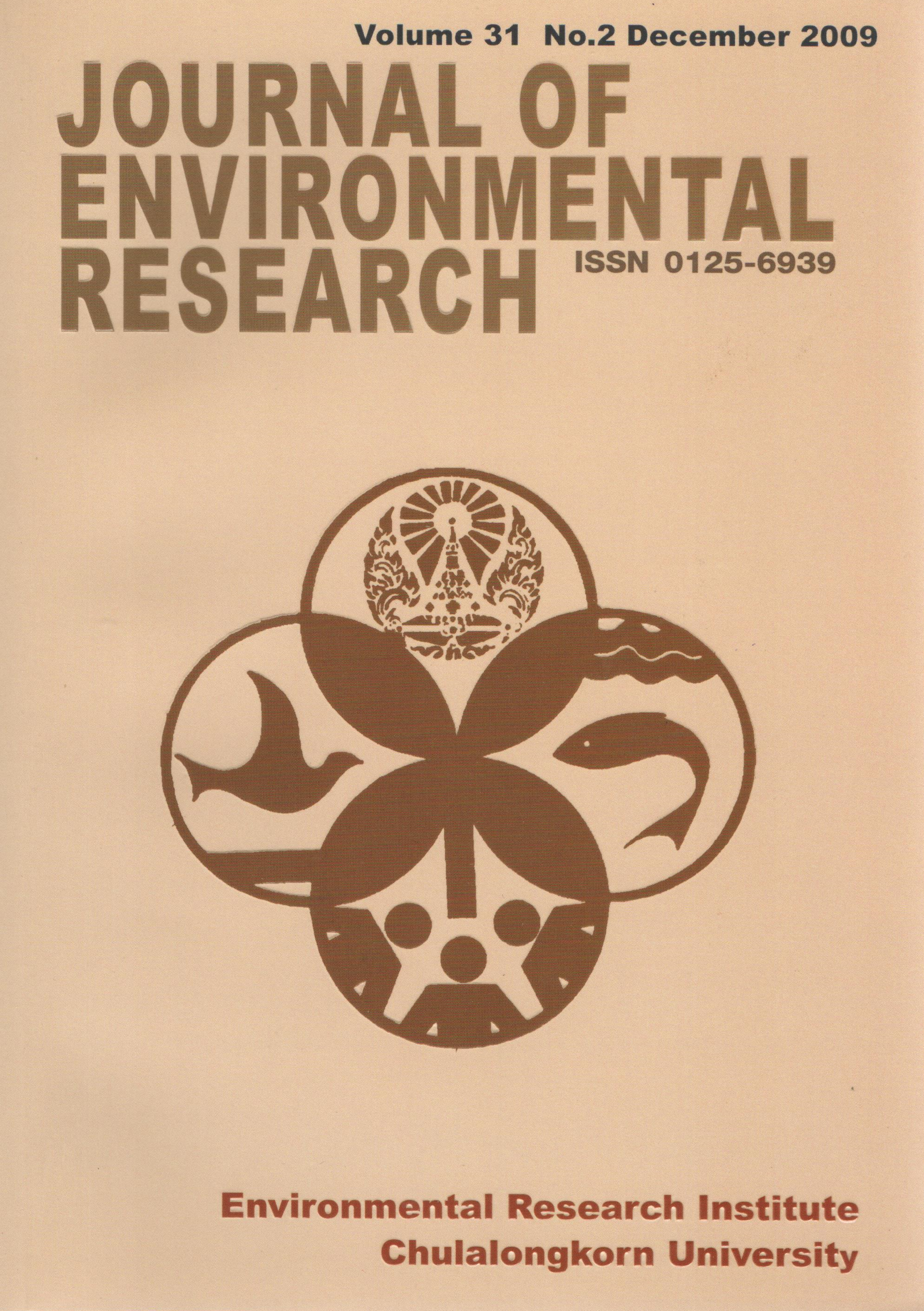Dispersion of Cadmium-resistant Bacteria in Cadmium-contaminated Soils at Mae Sot District, Tak Province
Main Article Content
Abstract
Cadmium contamination in cultivated soils and rice grain grown in Mae Sot District, Tak Province, Thailand was brought to public attention in 2003. Cadmium is considered highly toxic to plants, animals and microbes. However, some bacteria have developed the ability to detoxify cadmium and other heavy metals there by conferring resistance on these microbes. The aims of this research were to study the quantities and dispersion of viable soil bacteria and cadmium-resistant found in cadmium contaminated soils at Mae Sot District. Cadmium-resistant bacteria were isolated and further investigated for their cadmium-resistance ability. Cadmium and zinc concentrations were found in 15 soil samples ranging from 0.20 to 1,021.75 mg kg-1 and 18.80 to 80,575.00 mg kg-1, respectively. The maximum number of viable bacteria in soils collected in November 2007 and March 2008 were 4.3x108 CFU g-1 and 1.3 x 107 CFU g-1 soil, respectively. The smallest number of viable soil bacteria was found in soils containing a high concentration of cadmium. The number of cadmium-resistant bacteria that grew in TSA medium amended with 10 mM CdCl2 ranged from 3.2 x 104 to 1.3 x 105 CFU g-1 soil. 9 strains of cadmium resistant bacteria were selected for quantitative study of their level of resistance to cadmium toxicity. The results revealed that only 2 strains, TN6 and TM6, exhibited strong resistance to cadmium toxicity. 97.62 % of TN6 and 84.62 % of TM6 cells survived when placed in 3 mM CdCl2. These 2 strains of cadmium resistant bacteria, TN6 and TM6, were identified as Alcaligenes sp. and Arthrobacter sp., respectively, through 16S rDNA sequencing.
Article Details

This work is licensed under a Creative Commons Attribution-NonCommercial 4.0 International License.
Published articles are under the copyright of the Applied Environmental Research effective when the article is accepted for publication thus granting Applied Environmental Research all rights for the work so that both parties may be protected from the consequences of unauthorized use. Partially or totally publication of an article elsewhere is possible only after the consent from the editors.

